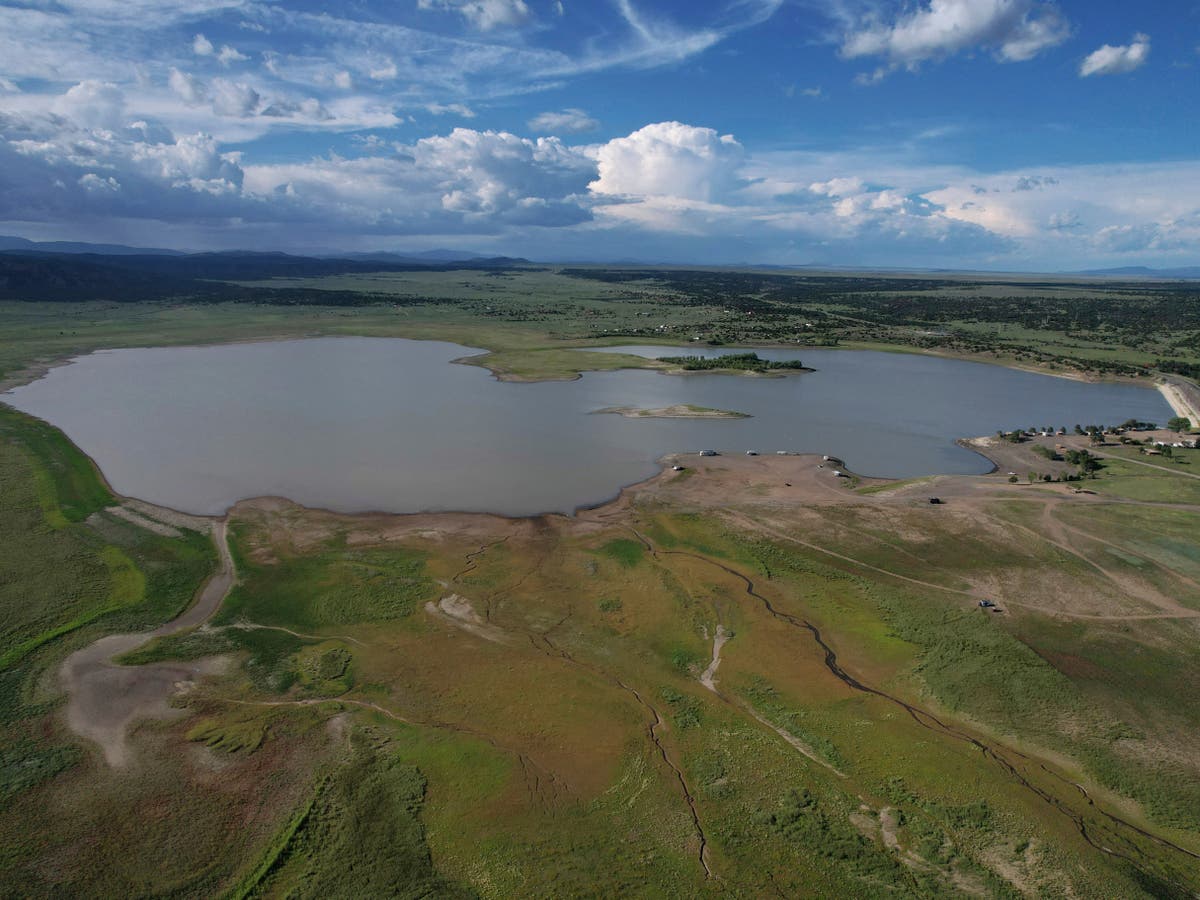
Sign up to our Evening Headlines email for your daily guide to the latest news Sign up to our free US Evening Headlines email Please enter a valid email address Please enter a valid email address SIGN UP I would like to be emailed about offers, events and updates from The Independent. Read our privacy notice Thanks for signing up to the
Evening Headlines email {{ #verifyErrors }}{{ message }}{{ /verifyErrors }}{{ ^verifyErrors }}Something went wrong. Please try again later{{ /verifyErrors }}
A New Mexico city is racing to find a new source of fresh water as its currently supply is set to run out in only 20 days.
The crisis started with a wildfire.
Earlier this year, a wildfire scorched the hills around Las Vegas, New Mexico, — not to be confused with the gambling mecca in Nevada — torching more than 340,000 acres of land. The fires were followed up by an unusually wet monsoon season — generally a blessing for the drought-stricken southwest — that washed the charred remains of the fires into the region’s water system.
That has left one of the city’s two reservoirs filled with contaminants that are overwhelming its filtration system.
It’s a frustrating time for the city — the monsoon rains would have been a blessing for a southwest town in the summer, but now that water is mostly unusable.
“After the biggest fire in the state’s history, we had the best monsoon season in probably 14 years,” Las Vegas Mayor Louis Trujillo told CNN. “Unfortunately, we weren’t able to use any of that water that was coming down our river because it was too heavily polluted for the treatment facility that we currently have.”
The risk goes beyond just general contamination; when carbon reacts with high levels of chlorine, which is used for sanitisation, the water can be carcinogenic.
The city’s utility director, Maria Gilvarry, told residents during a forum that it was necessary to remove the carbon contaminants prior to using the disinfectants.
Now, with only 20 days of fresh water remaining, the city is banking on a gamble. It hopes to draw water from a nearby lake and pre-treat it for household use until a more permanent solution can be found. This is no easy task; it takes time to test the water, and before the city can even begin tackling the logistics of distribution it must first determine the right combination and amount of chemicals needed to make the lake water potable.
“Our fingers are crossed on that,”Mr Trujillo said. He said the tests “will determine the quality of water we’re going to be sending to one of our reservoirs.”
If the city is successful on its gambit, it should buy Las Vegas officials a few more months to work out a long-term solution.
Residents in the city have been asked to reduce their water usage to 44 gallons a day to buy the city as much time as possible to solve the problem. According to the US Geological Survey, the average American uses around 80 to 100 gallons of water per day.
“It’s pretty critical at this point, we’re doing all we can,” Mr Trujillo said.
He said his residents were “so strong and very cooperative,” but noted that many of them are “very concerned” with the situation.
The city isn’t the only one facing a water shortage; residents in Jackson, Mississippi, are also facing a water shortage after flooding contaminated its ageing water treatment facility, leaving residents lining up for potable water.






